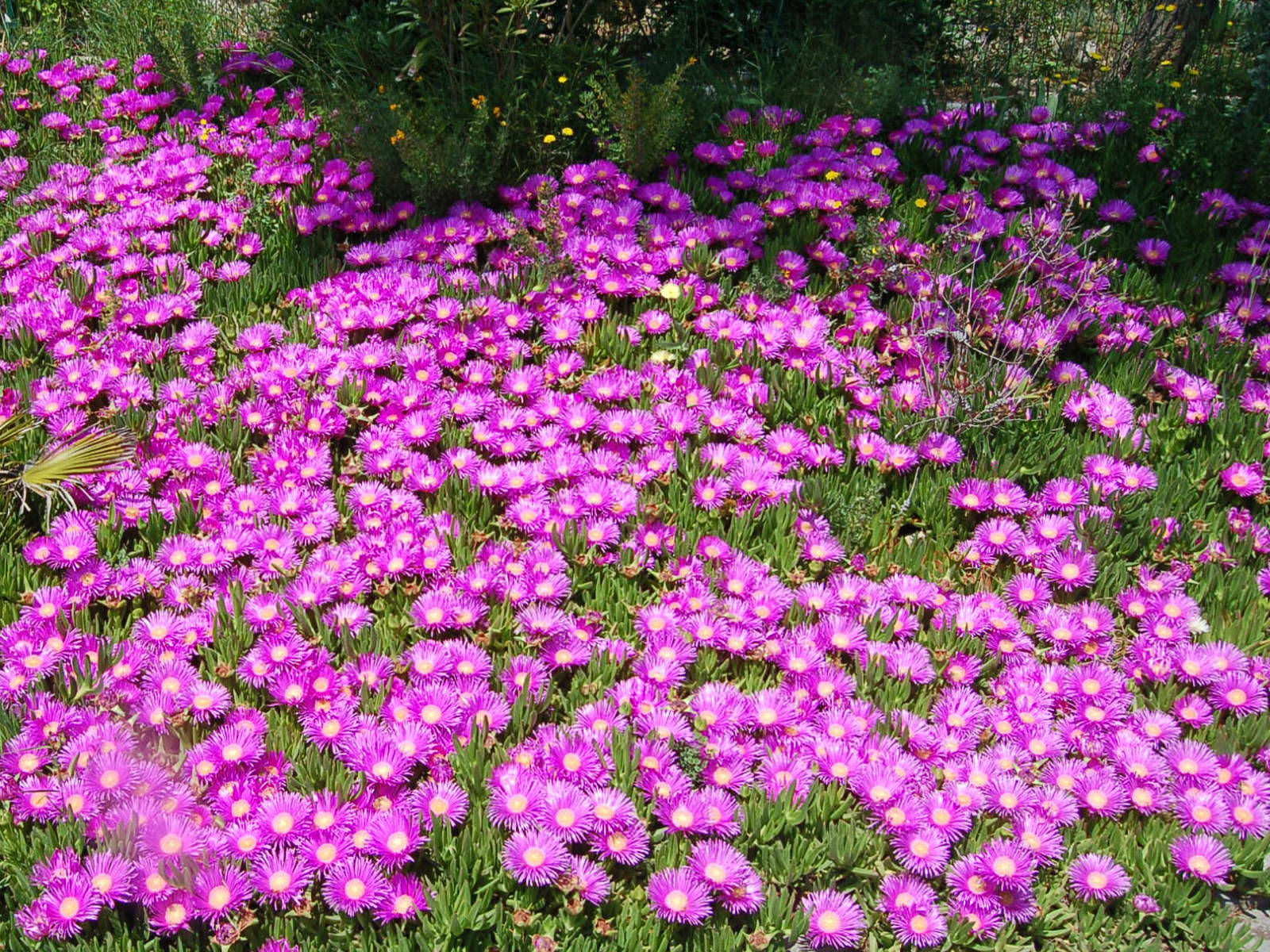Hardy purple ice plant, a captivating succulent with origins in South Africa, stands as a testament to nature’s resilience and aesthetic allure. Its captivating foliage, vibrant blooms, and adaptability to diverse environments make it a popular choice for gardens, landscapes, and containers alike.
This ice plant boasts thick, fleshy leaves adorned with a mesmerizing purple hue, creating a striking contrast against its bright yellow flowers. Its compact growth habit and tolerance to drought conditions make it an ideal choice for low-maintenance gardens.
Hardy Purple Ice Plant Overview

The hardy purple ice plant, scientifically known as Delosperma cooperi, is a succulent native to South Africa. This resilient plant belongs to the Aizoaceae family, which includes various succulent species known for their hardiness and drought tolerance.
The hardy purple ice plant is characterized by its low-growing, spreading habit, reaching heights of around 4-6 inches. Its foliage consists of thick, fleshy leaves arranged in a rosette pattern. The leaves are typically triangular or lance-shaped and display a vibrant purple or bronze hue. During the summer months, the plant produces masses of small, daisy-like flowers in shades of purple, pink, or white.
Environmental Requirements
The hardy purple ice plant thrives in well-drained soil with a slightly acidic to neutral pH. It prefers full sun exposure but can also tolerate partial shade. The plant is highly drought tolerant and requires minimal watering, making it an excellent choice for low-maintenance landscapes.
Cultivation and Care

Hardy purple ice plants are relatively easy to grow and care for, making them suitable for gardeners of all skill levels. Here are some detailed instructions on how to propagate, plant, and maintain these plants:
Propagation
Hardy purple ice plants can be propagated through cuttings or seeds. To propagate through cuttings, take a stem cutting from a healthy plant and remove the lower leaves. Dip the cutting in rooting hormone and plant it in a well-draining potting mix. Keep the cutting moist and provide bright, indirect light until it has developed roots.
To propagate through seeds, sow the seeds in a well-draining potting mix and cover them lightly with soil. Keep the seeds moist and provide bright, indirect light until they have germinated.
Planting
The optimal time to plant hardy purple ice plants is in the spring or fall when the weather is mild. Choose a planting site that receives full sun to partial shade and has well-drained soil. Space the plants 12-18 inches apart to allow for proper growth and air circulation.
Before planting, prepare the soil by digging a hole twice the width of the root ball and just as deep. Place the plant in the hole and backfill with soil, tamping down gently to remove any air pockets. Water the plant deeply after planting.
Watering
Hardy purple ice plants are drought-tolerant and do not require frequent watering. Allow the soil to dry out slightly between waterings. During hot, dry weather, water the plants more frequently, but avoid overwatering, as this can lead to root rot.
Fertilizing, Hardy purple ice plant
Fertilize hardy purple ice plants once a month during the growing season with a balanced liquid fertilizer. Follow the instructions on the fertilizer label for the correct dosage.
Pruning
Hardy purple ice plants do not require regular pruning, but you can trim them back in the spring to remove any dead or damaged growth. You can also prune the plants after flowering to encourage new growth and flowering the following season.
Pests and Diseases
Hardy purple ice plants are generally pest- and disease-resistant, but they can be susceptible to mealybugs, aphids, and scale. To control these pests, use insecticidal soap or neem oil. Hardy purple ice plants can also be affected by fungal diseases such as powdery mildew and botrytis. To prevent these diseases, provide good air circulation and avoid overwatering.
Uses and Benefits

The hardy purple ice plant is a versatile plant that offers a range of benefits in gardens, landscapes, and containers.
Ornamental Uses:
- Groundcover: The low-growing habit and dense foliage make it an excellent groundcover for suppressing weeds and adding color to slopes, borders, and rock gardens.
- Mass Planting: Large-scale plantings create a stunning visual impact, attracting attention with their vibrant purple blooms and succulent foliage.
- Containers: The compact size and drought tolerance make it an ideal choice for containers on patios, balconies, and rooftops.
Ecological Benefits
The hardy purple ice plant provides valuable ecological benefits:
- Pollinator Attraction: The purple flowers are rich in nectar, attracting bees, butterflies, and other pollinators.
- Wildlife Habitat: The dense foliage provides shelter and nesting sites for small animals, birds, and insects.
Medicinal or Therapeutic Properties
The hardy purple ice plant has traditionally been used for medicinal purposes, but scientific evidence to support these claims is limited.
